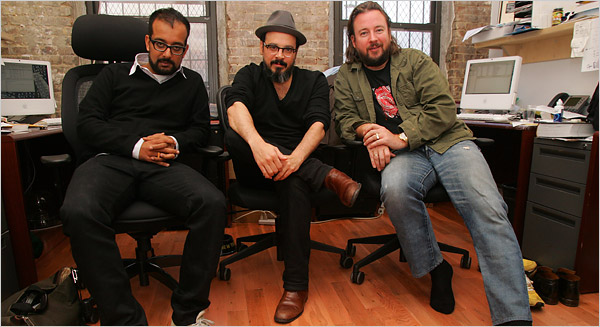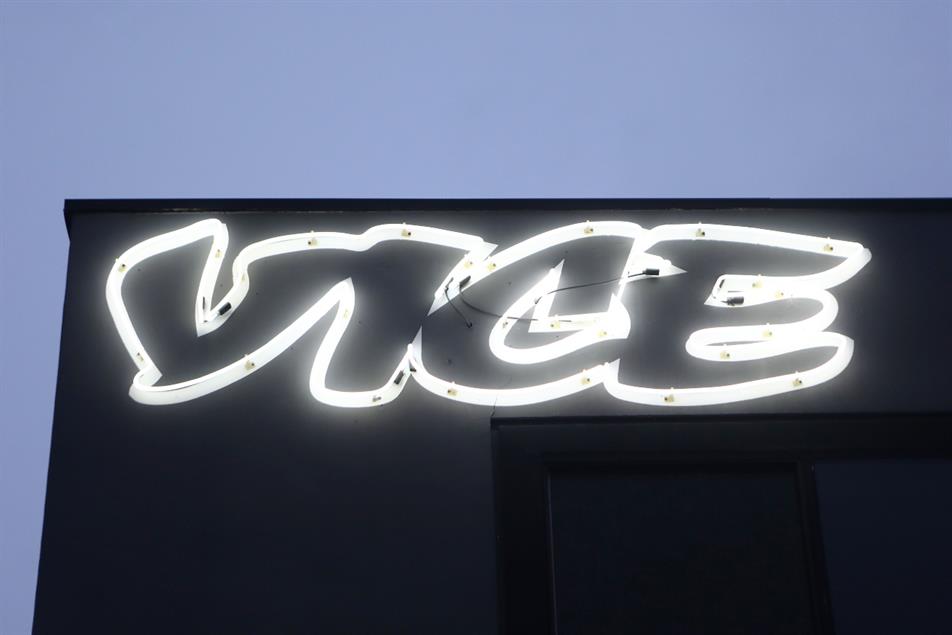Vice Media is a global media and entertainment company that produces content across a variety of platforms, including digital, television, film, and print. The company was founded in 1994 in Montreal, Canada, by Suroosh Alvi, Shane Smith, and Gavin McInnes. Vice Media’s mission is to “tell the stories that no one else will.”
Vice Media’s content is known for its edgy, irreverent, and often controversial take on current events and culture. The company has won numerous awards for its journalism, including Peabody Awards, Emmy Awards, and Cannes Lions.
Vice Media’s digital properties include Vice.com, a news and culture website with over 100 million monthly unique visitors; Vice News, a documentary news network with over 10 million subscribers on YouTube; and i-D, a fashion and culture magazine with over 3 million followers on Instagram.
Vice Media’s television properties include Viceland, a cable television network that launched in 2016; and Vice on HBO, a documentary series that airs on HBO. Vice Media has also produced a number of feature films, including “Bronco” (2015), “The Square” (2013), and “Gummo” (1997).
Vice Media has been criticized for its use of shock value and its glorification of violence. However, the company has also been praised for its innovative approach to journalism and its willingness to tackle difficult and controversial topics.
Vice Media is a global media and entertainment company with a growing audience. The company is well-positioned to continue to grow in the years to come, as it continues to produce cutting-edge content that appeals to a young, diverse audience.
Here are some of the key features of Vice Media:
- Edgey and irreverent content: Vice Media’s content is known for its edgy, irreverent, and often controversial take on current events and culture.
- Global reach: Vice Media has a global reach, with offices in over 30 countries.
- Diverse audience: Vice Media’s audience is diverse, with a large following among young people.
- Innovative approach to journalism: Vice Media is known for its innovative approach to journalism, which often involves using new technologies and storytelling techniques.
What sets Vice Media apart is its distinct voice and commitment to authenticity. From its early beginnings as a punk magazine in Montreal, Canada, Vice has evolved into a multimedia powerhouse, encompassing digital, television, film, print, and experiential platforms. The company has consistently sought to shine a light on underrepresented voices and explore untold stories, covering a wide range of topics, including politics, culture, technology, fashion, and more.
Vice Media has garnered attention for its immersive and immersive storytelling techniques. It prides itself on its ability to capture the raw and unvarnished realities of the world, often venturing into unconventional and controversial territories to deliver thought-provoking content. Whether it’s dispatching correspondents to conflict zones, investigating social issues, or exploring subcultures and emerging trends, Vice Media has built a reputation for its fearless and often provocative approach to journalism.
Founding History of Vice Media
The founding history of Vice Media traces back to 1994 when three friends, Shane Smith, Suroosh Alvi, and Gavin McInnes, launched a punk magazine called Voice of Montreal in Montreal, Canada. Initially, the magazine focused on covering local punk music, alternative culture, and political issues, presenting a fresh and irreverent perspective that resonated with readers seeking an alternative to mainstream media.

As the magazine gained popularity, the founders recognized an opportunity to expand their reach beyond Montreal. In 1996, they changed the publication’s name to Vice, and with a DIY spirit, they began distributing it in various cities across North America. Vice quickly gained attention for its distinctive voice, offbeat content, and a willingness to explore taboo subjects that were often ignored or overlooked by traditional media outlets.
In the late 1990s, Vice Media took its first steps into the digital realm with the launch of Vice.com. The website became an extension of the magazine, featuring articles, photo essays, and videos that further showcased Vice’s unique approach to storytelling. With its irreverent and edgy content, Vice.com attracted a growing online audience, particularly among younger readers hungry for alternative perspectives and unfiltered narratives.
The early 2000s marked a significant turning point for Vice Media. In 2001, the company established its headquarters in New York City, a move that would prove instrumental in its growth and global expansion. The founders set their sights on transforming Vice from a magazine into a multi-platform media company, harnessing the power of new technologies and emerging distribution channels.
In 2006, Vice Media caught the attention of mainstream media when it launched the VBS.tv online video platform. VBS.tv offered original documentary-style programming, covering a diverse range of topics, including international conflicts, underground music scenes, and subcultures. The platform’s immersive and raw storytelling captivated audiences and earned critical acclaim, setting Vice Media apart as a pioneer in digital video content.
As Vice Media continued to evolve, it attracted investment from notable figures in the media industry. In 2013, Rupert Murdoch’s 21st Century Fox invested $70 million, valuing the company at $1.4 billion. This strategic partnership helped Vice expand its global reach and gain access to new resources and opportunities.
The company’s expansion was not limited to digital platforms. In 2011, Vice Media launched VICELAND, a television network that brought Vice’s distinctive content to the small screen. VICELAND provided a platform for Vice’s unique programming, featuring documentary series, news shows, and cultural content that resonated with a younger demographic. The network gained a dedicated following, further solidifying Vice Media’s influence and presence in the media landscape.
In recent years, Vice Media has continued to diversify its offerings. The company ventured into film production, releasing critically acclaimed documentaries such as “Fishing Without Nets” and “The Vice Guide to North Korea.” It also expanded its presence in the print industry with various publications, including Vice magazine, i-D, and Noisey, covering a wide range of topics and attracting a devoted readership.
Vice Media’s international expansion has been a key factor in its success. The company established offices in numerous countries, including the United Kingdom, Germany, Brazil, Japan, and Australia, among others. This global network of journalists, filmmakers, and creatives allowed Vice Media to capture stories from around the world and present diverse perspectives on global issues.
As Vice Media has grown, it has not been without controversy. The company has faced criticism for its provocative content, accusations of cultural appropriation, and allegations of fostering a toxic workplace culture. However, Vice Media has also taken steps to address these issues, emphasizing the importance of diversity, inclusion, and ethical reporting practices within its organization.
Different Properties of Vice Media
Vice Media encompasses a diverse portfolio of properties that span various platforms and mediums. Each property has its own unique characteristics and offerings. Here are some key properties of Vice Media:
Vice.com: Vice.com is Vice Media’s flagship digital platform, serving as a hub for news, articles, videos, and other forms of content. It features a wide range of topics, including politics, culture, fashion, technology, and more. Vice.com showcases the company’s distinctive storytelling style and engages a global audience.
VICELAND: VICELAND is Vice Media’s television network, offering a mix of original programming and acquired content. The network features documentaries, docuseries, talk shows, and cultural programming that cater to a younger demographic. VICELAND explores a wide range of topics, including music, food, travel, and social issues.
Vice Studios: Vice Studios focuses on producing high-quality film and television content. It collaborates with renowned directors, producers, and writers to create compelling documentaries, feature films, and scripted television series. Vice Studios is responsible for notable projects like “Fishing Without Nets,” “The Vice Guide to North Korea,” and “Dark Side of the Ring.”
Vice News: Vice News is Vice Media’s news division, known for its in-depth reporting, investigative journalism, and on-the-ground coverage of global events. It provides a fresh perspective on current affairs, politics, and social issues through articles, videos, and documentaries. Vice News has gained recognition for its immersive and immersive reporting style.
Vice Digital Channels: Vice Media operates several digital channels that cater to specific interests and subcultures. These channels include Noisey (music and music culture), Motherboard (technology and science), Broadly (women’s issues and feminism), and i-D (fashion and youth culture). Each channel offers specialized content and explores its respective subject matter in depth.
Vice Magazine: Vice Magazine, the print publication that started it all, remains a significant property of Vice Media. Known for its edgy and provocative content, Vice Magazine covers a wide range of topics, including music, art, fashion, and politics. It showcases unique perspectives, features emerging artists, and captures the cultural zeitgeist.
Virtue Worldwide: Virtue Worldwide is Vice Media’s in-house creative agency. It collaborates with brands to develop creative campaigns, branded content, and marketing strategies that resonate with Vice Media’s audience. Virtue Worldwide leverages Vice’s distinct voice and style to create engaging and authentic brand experiences.
Live Events and Experiences: Vice Media organizes and hosts live events and experiences that bring its content to life. These events range from music festivals and conferences to immersive brand activations and cultural gatherings. Vice Media’s events provide opportunities for audiences to engage with Vice’s content and ethos in a tangible and interactive way.
Each of these properties contributes to Vice Media’s overall brand identity and helps the company reach diverse audiences across different platforms. They represent Vice Media’s commitment to delivering unique and thought-provoking content through a variety of mediums and experiences.
Also Read: Comcast Corporation – The Media Juggernaut With Ever-Expanding Domination
To read more content like this, subscribe to our newsletter
Go to the full page to view and submit the form.


